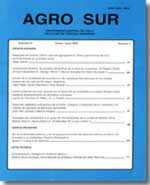The role of soil physics in agricultural production
Main Article Content
Abstract
Physical soil properties govern the local conditions of one of the most. important factors for plant, growth : Water Regime. Its overwhelming importance directed the selection of soils and plant production in the very earliest period of agriculture. Even in times of sophisticated fertilizer, management still water supply remains a predominant growth factor. In earlier times for this item, there was no other choice than the selection of sites. Nowadays technology and machinery allow a meliorative actions that were beyond reach only a few decades ago, as they involve translocation of soil. Material, building of dikes and road cuts, diverse contaminating and decontaminating processes, reclamations. But at the same time compaction of agricultural sites occurs as before and problems of soil layer depths appear with the relation between water holding capacity, aeration of the rooted zone and trafficability. The consequence of this fast development is the lack of a theoretical background for quite a few of the cases. There is a need to develop and propagate knowledge on the behavior of soil under stress in a wide range of unsaturated water contents. This means the development of a new branch within the classical frame of soil mechanics. Since selection of sites was actually the first physical method, further development would be a second step, which necessarily includes highly sophisticated procedures. In this context, some very specific problems of soil physical methods gain weight. A very important one is that agricultural soil scientists use undisturbed samples at different compaction and moisture states for many investigations. This again tends to create difficulties to obtain sufficient numbers of replicate samples for statistical treatment. To outflank these problems prospecting procedures before sampling might be a way for overcoming this problem. Developing pedotranfer functions is another out. This means efforts to develop correlations of easily available soil parameters with those, which are essential but too tedious, too consuming or too expensive for regular measurement.

